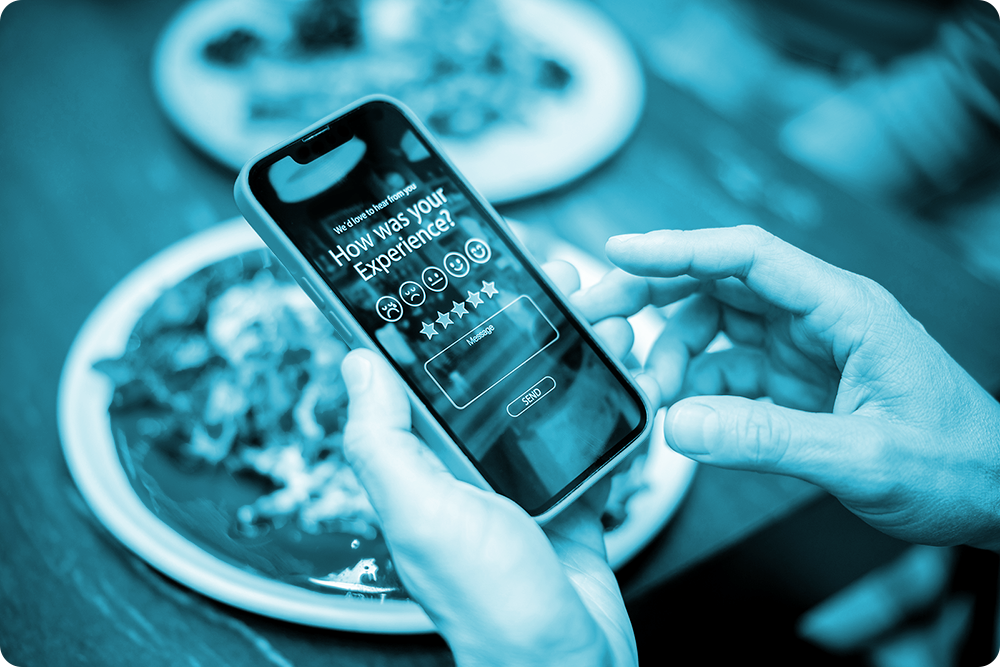Current Market Situation: Price Growth and Consumer Sensitivity
Meaningful Vision’s analysis of the most up-to-date market data predicts casual dining and fast-food brands will face a challenging environment in 2025. Restaurant prices have risen since the beginning of the year, up to 6% over 2024 levels, driven by higher labour costs, food inflation, and rising delivery costs, while consumer demand has not kept pace, and customers are more price-conscious than ever.
Footfall across fast-food outlets is flat in Q1 2025 compared to the previous year, while restaurants and pubs report a drop of almost 5%.
However, the number of fast-food stores is rising, according to Meaningful Vision’s data the number of chain-owned fast-food outlets increased by 2% over the previous year. New players are entering the arena, and the number of competitors is growing with at least eight major North American fast-food brands having already entered, or with plans to enter the UK market, including Dave’s Hot Chicken, Chick-fil-A, MB Chicken, and Carl’s Jr. Homegrown and international brands hold roughly half the market each, but international chains are expected to grow faster owing to this aggressive expansion.
Competition has intensified, with every format vying for the same occasions. Pizza players are pushing into lunch slots, Greggs has introduced pizza deals at dinner-time, and chicken chains are offering breakfast. Simultaneously, UK consumers are cutting back, looking for better value and willing to switch brands for better deals.
Against this backdrop, brands are forced to rethink their strategies. Price hikes alone are not enough to chase margins or sustain traffic. Instead, promotions and loyalty programs have emerged as critical tools to retain existing customers and expand the base.
Promotions: Smarter, Sharper, More Digital
Promotions have surged as brands seek to deliver value while defending prices. In 2024, UK restaurants increased promotional offers by 25%, and in 2025 the trend has continued. For the top chains, delivery platforms nearly doubled the number of offers available, revealing just how competitive the space has become.
The average discount offered in 2025 was 25%, but for the pizza delivery segment in particular it was even higher, increasing from 23% to 27% this year and further confirming the intense rivalry of the market.
Different channels employ different tactics. In restaurants, special prices dominate. On delivery platforms percentage discounts are most common. Free product offers, such as buy-one-get-one-free (BOGOF) or spend-and-get, are gaining momentum in both channels.
Mobile apps are becoming the promotional battleground. In Q1 2025, 20% of promotions ran through apps, and a staggering 40% of those were reward-based. The average discount in apps reached 32%, significantly higher than on delivery platforms, demonstrating that brands are willing to go further to capture and retain digital users.
Critically, brands are learning to avoid over-targeting bargain hunters, focusing instead on smart, tailored offers, appealing to high-value customers willing to pay more for a better experience.
Meal Deals and Limited Times Offers
Meal Deals aim to deliver better value for the customer. In Q1 2025 share of meal deals in fast–food increased from 15% to 17%, while for pizza they were even more important, growing from 16% to 20%,
Meal deal prices increased by 8%, year on year, higher than prices on individual products. Only pizza was an exception. Despite the background inflationary pressures, the average price of pizza meal deals declined by 2%.
Limited Time Offers (LTOs) are another important tool used by businesses to engage with their customers. Typically, seasonal or promotional menu items aim to attract customers through creating a sense of urgency. On average LTO’s are around 5% more expensive than regular items, and generally make up around 5% of the menu, this saw no change during the last year.
Segments with the highest share of Limited Time Offers (LTOs) are burgers, coffee, and sandwiches. Burger restaurants remain the most active in launching LTOs, often featuring unique builds or premium ingredients for a short period. Coffee chains follow closely, leveraging seasonal flavours and beverages to drive repeat visits. Sandwich brands also make strong use of LTOs to introduce limited-run fillings or new combinations of ingredients in an effort to stand out in a crowded market. Together, these three segments demonstrate how LTOs can effectively boost customer engagement while keeping menus fresh and exciting.
Loyalty: From Optional to Essential
Customer loyalty is no longer just “nice-to-have”, a side-effect of day-to-day trade, albeit a desirable one. In today’s environment, encouraging and rewarding loyalty from the customer base is a competitive necessity. Three-quarters of the UK’s fast-food chains now offer loyalty programs, nearly all of them app-based. Coffee shops pioneered the model with the classic “10th cup free,” but now burger and chicken chains are following suit and introducing more sophisticated systems.
Gamification, or adding interactive challenges, spin-to-win wheels, unlockable tiers, and streaks, has become a key feature of loyalty programs. This turns rewards into a fun and engaging experience, not just a transaction.
For customers, a £24 spend typically delivers a 10% reward through free products or app discounts. But for brands, the payoff is even bigger: higher visit frequency, better data, and stronger emotional connections.
Loyalty programs are also evolving into acquisition tools with 52% now offering special incentives to new customers, including free products, bonus points, and discounts, building relationships from the very first interaction.
In an industry where margins are tight, prices high, and competition fierce, promotions and loyalty have become a critical rung on the ladder to success. They give brands a powerful method to defend their market share, to assist in building high-yield relationships with customers, and to help businesses remain vital in a crowded, digital-first marketplace.
As Maria Vanifatova, CEO of Meaningful Vision, puts it: “Promotions and loyalty are no longer just about driving short-term sales. They’re about owning the customer relationship. Those who use data cleverly, to craft relevant, rewarding experiences will win both share and loyalty.”
